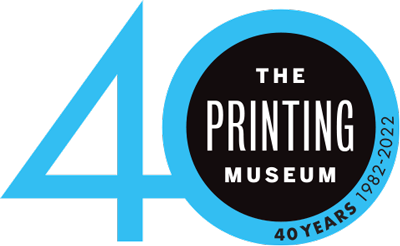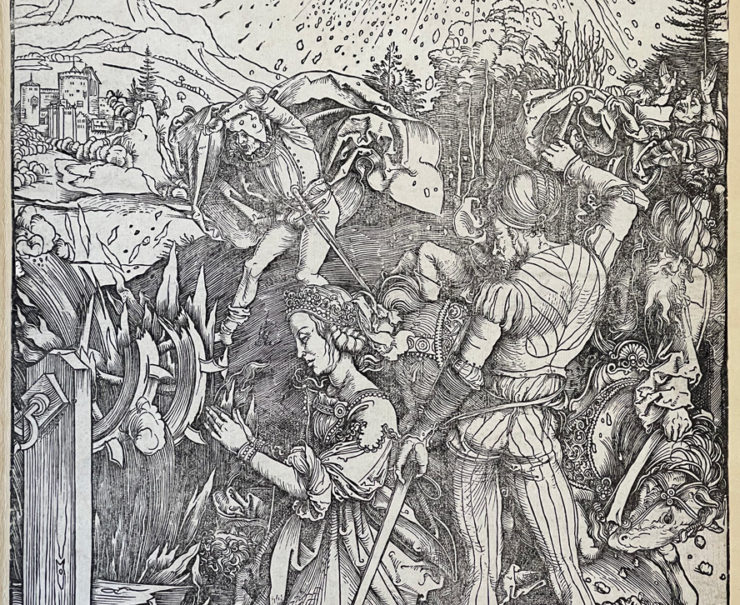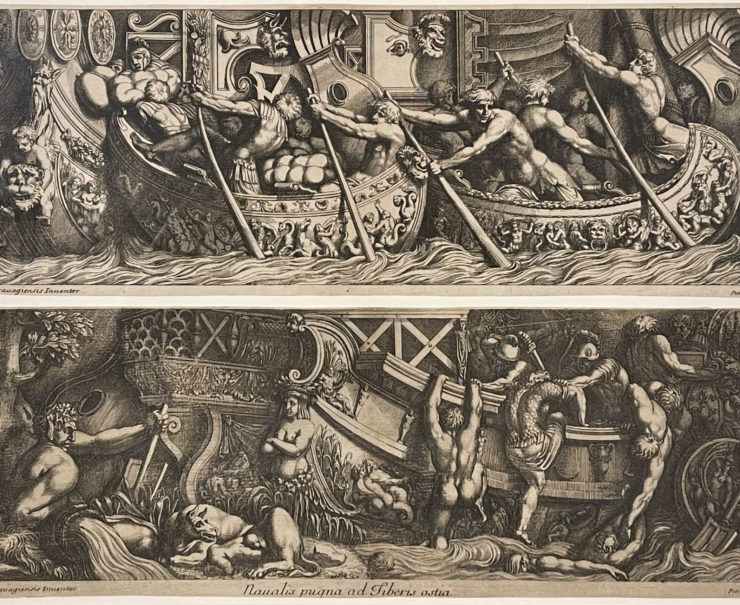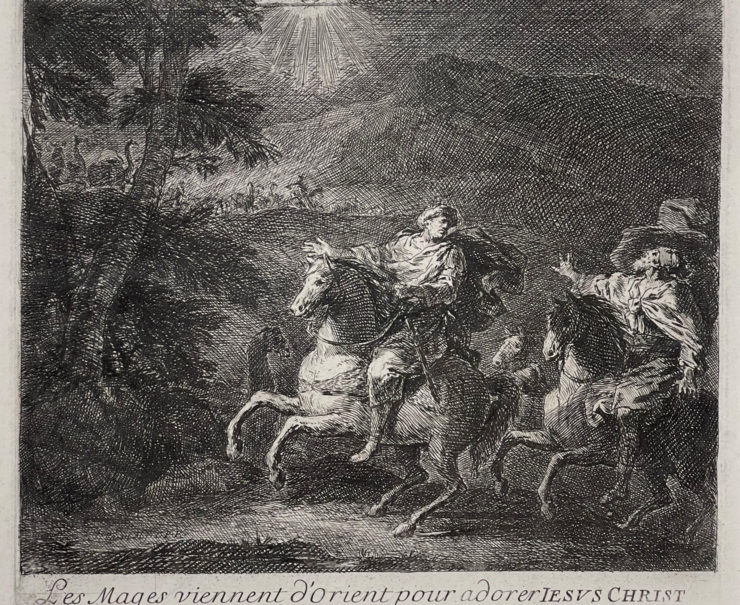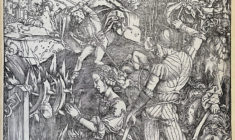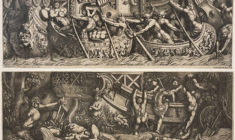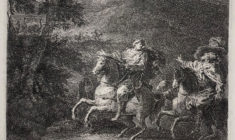This exhibition of over 40 woodcuts, engravings and etchings from the museum’s permanent collection traces the early history of printmaking in Western Europe—from the workshops of armor decorators to those of the greatest painters of the Renaissance and the Enlightenment, such as Albrecht Dürer, Annibale Carracci, and Giovanni Battista Piranesi.
Paper and the earliest printing technique of woodcut arrived in Europe from China via the Islamic world by the 1300s. Originally developed to decorate textiles, the method of woodblock printing involved cutting patterns and designs into a block of wood, inking the resulting image and transferring it to paper or cloth by applying light pressure. The process of engraving developed from the goldsmith’s trade of armor decoration. Designs were most likely transferred onto paper to record the designs being sold. Eventually these processes entered the studio practice of the era’s leading painters.
Artists portrayed a wide array of subject matter. The public associates religious themes and imagery with old master prints as they are largely the ones to survive due to the preservation efforts of the church. Prints were not merely copies of paintings. Artists treated them as artworks, creating paintings and prints based on study drawings. Artists employed highly skilled engravers and draftsmen in their studios to achieve their desired artistic styles. The museum’s collection features works from the Italian, German, Flemish, and French schools of printmaking.
Albrecht Dürer became one of the most renowned artists of the era through the circulation of his woodcuts and engravings to the artistic centers of Europe, as the public would not have had access to his paintings in private residences. Artists across Europe studied his techniques and copied portions of and even entire prints, an accepted practice of the time. Like Dürer, Rembrandt van Rijn and Francisco Goya became a widely known artists due to his embrace of printmaking and the volume of works he produced.
Many of the old master prints in the museum’s collection were donated by Rev. Edward A. Bader, a Catholic priest and curator of art and archaeological items at the University of St. Thomas. A native of Detroit, Bader was an avid art collector who became interested in archaeology, studying it independently in both Cambridge, England, and Athens, Greece.
THE WELCOME GALLERY
